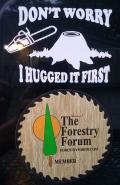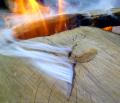- Welcome to The Forestry Forum.
-
 UP Michigan
by Old Greenhorn
UP Michigan
by Old Greenhorn
[Today at 02:13:30 PM] -
 How do I attach a file to...
by Old Greenhorn
How do I attach a file to...
by Old Greenhorn
[Today at 02:06:31 PM] -
 Does anyone know what this...
by Magicman
Does anyone know what this...
by Magicman
[Today at 01:23:17 PM] -
 Sinus Perforation.
by gspren
Sinus Perforation.
by gspren
[Today at 12:19:06 PM] -
 Steel base farm trailer, how...
by JD Guy
Steel base farm trailer, how...
by JD Guy
[Today at 11:15:50 AM] -
 RPM Gauge?
by mike dee
RPM Gauge?
by mike dee
[Today at 09:37:16 AM] -
 Remote band mill, how can...
by WV Sawmiller
Remote band mill, how can...
by WV Sawmiller
[Today at 09:36:45 AM] -
 My timber frame build
by Andries
My timber frame build
by Andries
[Today at 08:50:32 AM] -
 Whatcha Sawin' 2025 ??
by Magicman
Whatcha Sawin' 2025 ??
by Magicman
[Today at 08:24:49 AM] -
 Good books
by aigheadish
Good books
by aigheadish
[Today at 07:55:51 AM] -
 Whatcha Growing?
by aigheadish
Whatcha Growing?
by aigheadish
[Today at 07:55:24 AM] -
 The weather 2025
by Nebraska
The weather 2025
by Nebraska
[Today at 07:53:34 AM] -
 Solar kiln supplemental heat...
by Nebraska
Solar kiln supplemental heat...
by Nebraska
[Today at 07:46:54 AM] -
 My new client and Quarry update...
by teakwood
My new client and Quarry update...
by teakwood
[Today at 07:45:09 AM] -
 What market to get into cutting...
by TreefarmerNN
What market to get into cutting...
by TreefarmerNN
[Today at 07:36:17 AM]
Do you have trees to grow? Logs to saw? A forest to manage? Chainsaws to fix? A sawmill to purchase or maintain? Timber related business to run? Lumber to dry? Trees or plants to identify? A cabin to build? Are you hungry and like FOOD?
Or would you just like to pull up a stump and visit with a friend?
If any of these and a multitude of other topics apply, then The Forestry Forum is the
place for you.
Thank-You to our Contributing Shameless Commerce Members
- Carolina Custom Cut LLC
- D & S Sawmill Services
- Whispering Pines Farm
- Log-Gistics. A neighborhood sawmill
- Custom Wood Fibers
- Whidbey Woodworks and Custom Milling
- Hamsley Hardwood Quality Hardwood Lumber
- Saw it Coming - Portable Sawmill Service
- Dave's Sugarhouse
- Nicholson Wood Products LLC
- Welsh Tree Service
- Terrific Timbers LLC
- Quartersawnoak.com
- The Custom Sawyer
- Eastern Red CedarProducts LLC






































